Below is a small representation of the hundreds of investigations we’ve performed into our clients’ New York City properties. For each, we’ve produced a House History Book or House History Report. Contact us today to discover the history of YOUR house.********************************************************************************************************************************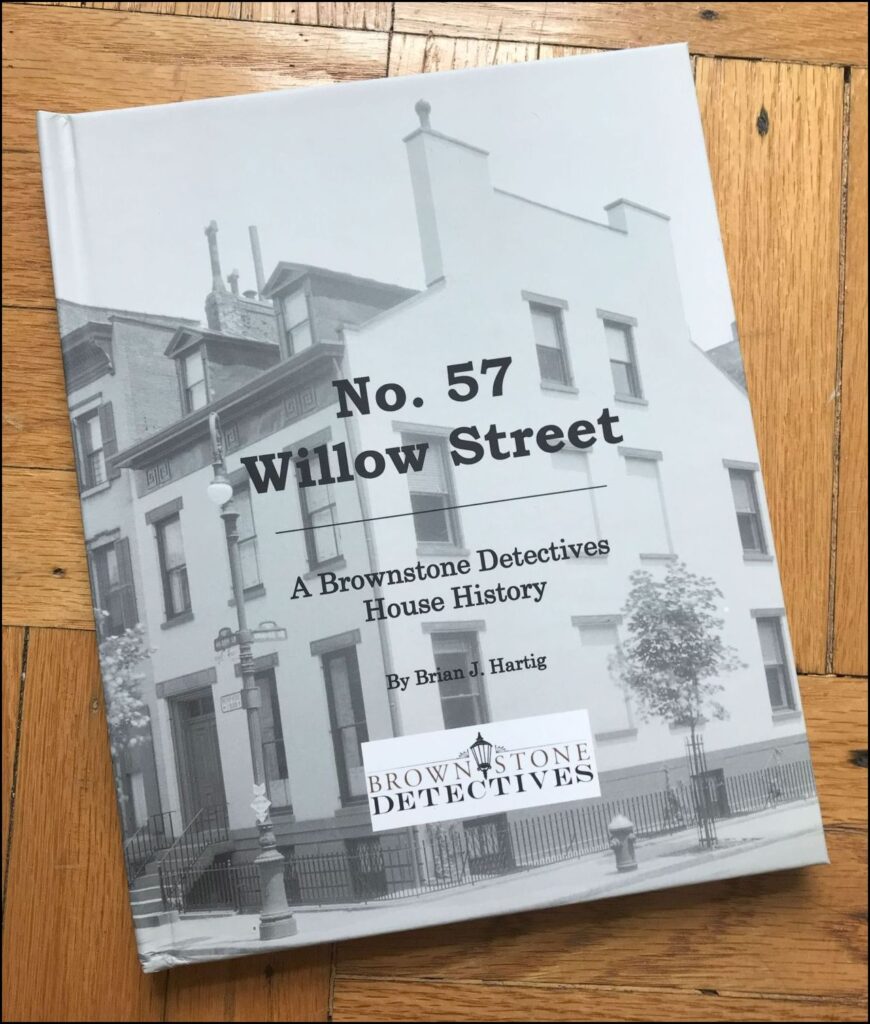 No. 57 Willow Street
No. 57 Willow Street – constructed in 1824, this landmarked brick townhouse is celebrating its bicentennial! During the course of our investigagion, we tracked down its broad array of former owners and residents who, in many ways, had a great influence on the future of our country. Most significantly was merchant Henry Bowen, a resident who had a connection with Abraham Lincoln. In the late 1850s, he invited the future present to New York City to make a speech that would end up setting Lincoln onto the road to the presidency. During this trip, Lincoln visited Brooklyn and, at one point, after having visited Plymouth Church, stood out front of No. 57 as Bowen invited him in to dinner. After the house’s construction, No. 57 (it was originally No. 47) was sold to a British dry goods merchant who had been, during the War of 1812, detained by the U.S. government as a foreign enemy.

After approximately four years of ownership, he sold No. 57 to future Brooklyn Mayor George Hall. The next several owners comprised merchants of various types with businesses in New York City. During the Civil War, the property ended up in the hands of partner in a drug firm, whose father founded Olcott & McKesson, a pharmaceuticals firm that, today, is a multi-billion-dollar pharmaceutical giant known to the world as McKesson.
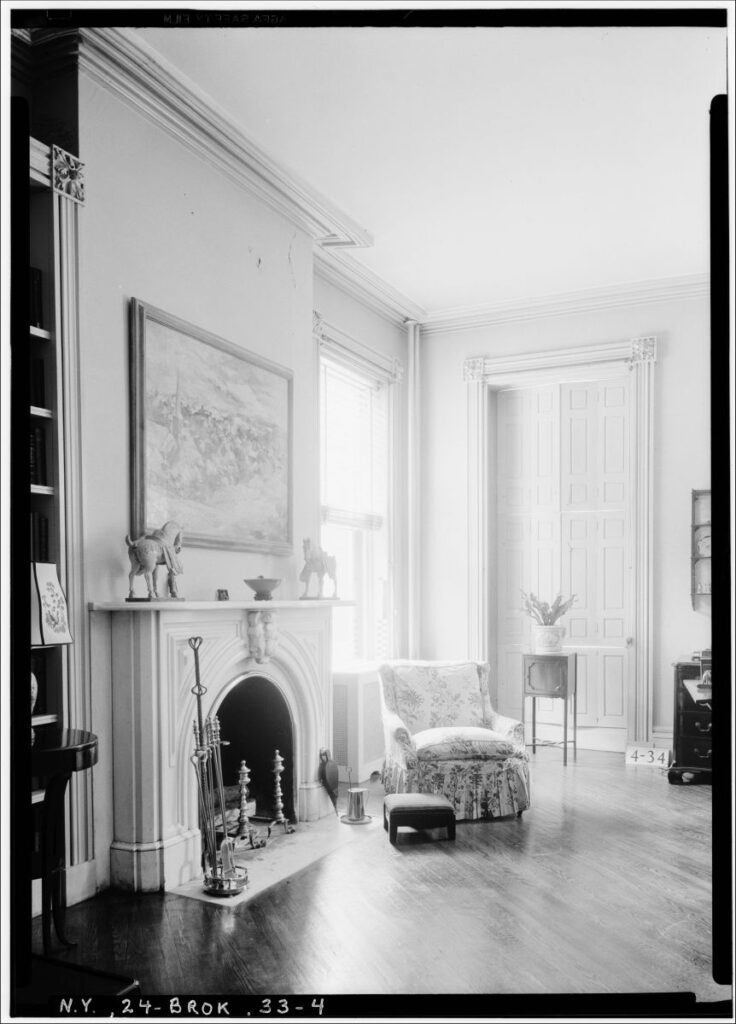
The next owner was a ship’s captain and chandler who had had a colorful past as a privateer during the Civil War. His family used the property as his family’s private residence and, then, through the 1890s as an upscale boarding house, followed as a private home leased to wealthy businessmen and their families. Afterwards, in the early 20th century, the property was conveyed into the hands of line of speculative investors who would use the house for its rent roll or in order to flip the residence. At the genesis of the Depression, the next longest-owning possessors of the property, the Szolds, purchased it, living there for 30 years until 1960. During this period, the Historic American Buildings Survey (HABS) selected No. 57 as one of a number of important structures worthy of surveying and cataloging. Through this effort, intricate architectural drawings were made of the property. The subsequent owner, an international exporter, was honored with an award by President Ronald Reagan. By 1980, No. 57 once again changed hands, becoming the home to a wealthy partner with investment firm Peabody and Kidder. After 20 years of ownership, the property was conveyed to a partner with Goldman Sachs who lived there with his family into the 2000s. (To see more of this book, click
HERE.)
********************************************************************************************************************************
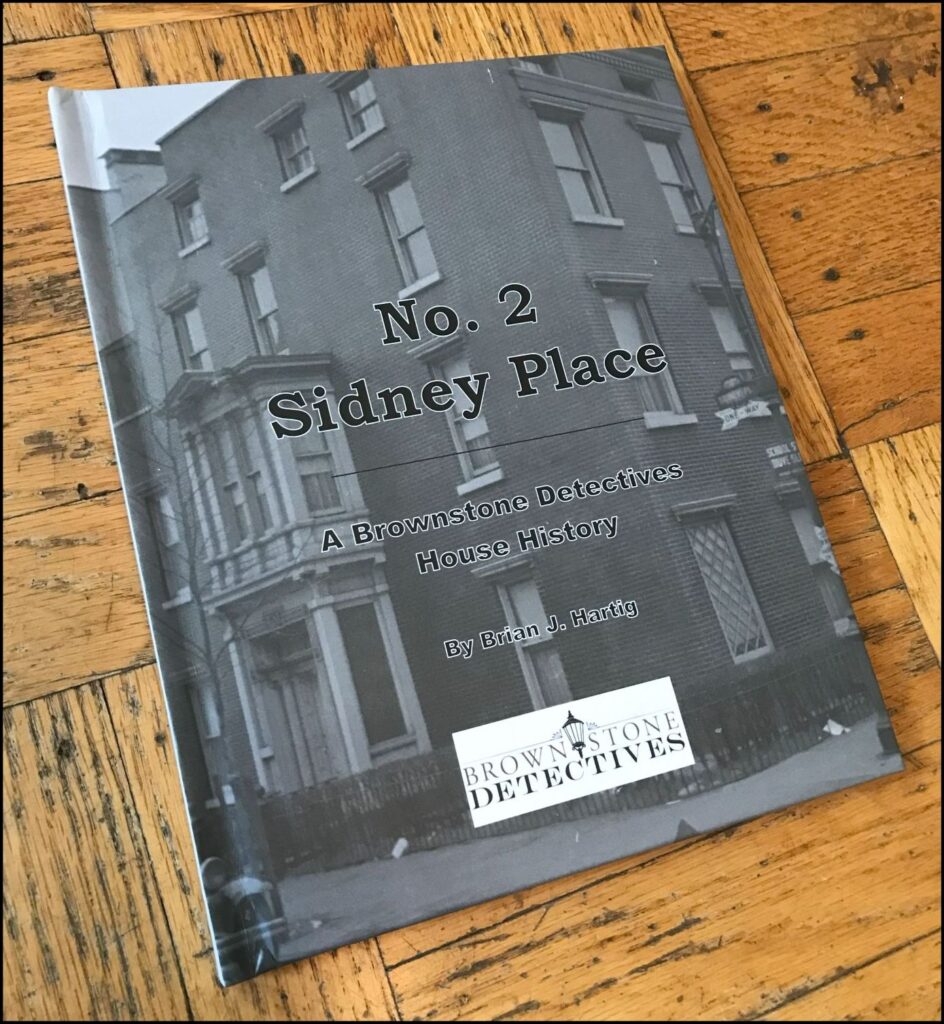 No. 2 Sidney Place
No. 2 Sidney Place – constructed in 1845, this landmarked brick townhouse would become home to countless doctors who used the property both for their residence as well as their office. First, though, the builder used the property for his family for its initial 12 years until it became a high-end rental property for medical doctors starting around 1858. One resident, who broke that tradition was Meda Blanchard, a soprano singer, the pinnacle of whose fame and success was her performance at the White House for a gathering given by the Lincolns (the first opera singer ever to do so). After her residence at No. 2 in the 1870s, the property continued its history as a residence for
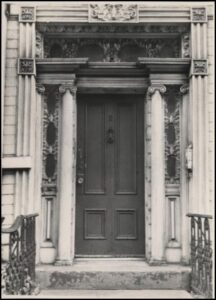
doctors, becoming the home to a Superintendent of the Board of Health, who managed the smallpox epidemic raging at the time. Afterwards, another doctor moved in who developed and instituted modern humane methods for caring for insane persons, which included “the abolition of all mechanical restraints.” In the early decades of the 1900s, the property once again took a detour and became the home of descendants of the original builder, then the residence of the president of the Sanborn Map Company, followed by another doctor whose wife, Juliet Mosher, was another well-known soprano. In the 1940s, a female lawyer, one of the founders of the Brooklyn Women’s Bar Association, who worked within the City’s Corporation Counsel, purchased the property, occupying the house for a number of years. Later, in the 1970s, a married couple – comprising two Swedish authors – made No. 2 their home, followed, afterwards, by a family whose matriarch was the then-current President of the Bank of New York Mellon.
********************************************************************************************************************************
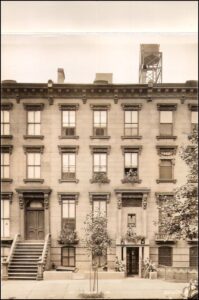 No. 41 Monroe Place
No. 41 Monroe Place – A mid-19th century brownstone, this property constitutes the first we have researched that – a victim of eminent domain – is no longer extant. Demolished in 1936, along with several other Monroe Place brownstones, to make way for a court building, the property would have a 70+-year run. Owned by members of the Studwell family for 60 of those years, the family’s patriarch, Alexander Studwell, had made his fortune in the leather business and, incidentally, was instrumental in calling Congregationalist clergyman and magnetic speaker, Henry Ward Beecher, to the pastorate of Brooklyn Heights’ Plymouth Church. Studwell’s children would inherit No. 41 in 1891. His three sons would become, like their father, leather
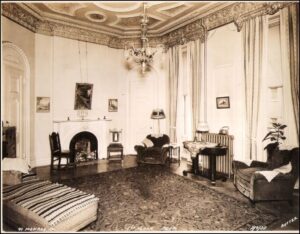
merchants. When the family finally parted with the property in 1924, it was conveyed to a friend of the family, who quickly resold it to a realtor. After a few more quick – and, likely, profitable – sales, the property landed in the possession of a member of the Syrian diaspora who was a dealer in ship’s supplies. After briefly attempting to sell the property, he converted it into a rooming house, leasing it out to operators wishing to run such a business. By 1930, the property had 13 residents – mostly lodgers. The property fell into foreclosure the following year, however, and was sold, eventually ending up in the hands of the family that had, for a few years, been leasing it to manage as a rooming house. After possessing the property for a short four years, the City of New York announced its intention to acquire No. 41 – along with several other adjoining brownstones – through eminent domain. The land, the City claimed, was needed for its new Appellate Court house. Demolition on the brownstone began in late 1936. And the court house, which went up over a period of approximately two years, opened in the fall of 1938.
********************************************************************************************************************************
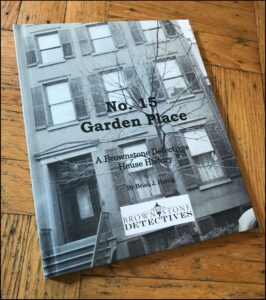 No. 15 Garden Place
No. 15 Garden Place – This Greek Revival row house was constructed in 1846 by street contractor James Collins, whose biggest claim to fame came when he constructed the first ever subway under Atlantic Avenue. Collins would lease out the property (its original address was No. 8) to an agent to manage as an upscale boarding house. The first boarders appear to have been a merchant and a bookkeeper, both of which possibly lived there with their families. In 1856, however, after having apparently overextended himself and fallen behind on a large mortgage note, Collins would be forced to lose control of the property when management of his estate was placed into the hands of assignees. These assignees, in an effort to help Collins pay off his debts, would eventually sell, in addition to many of his other holdings, No. 8 in 1864.

The next owner was a ship’s captain, James Funcke, who continued to lease the property during his life, no longer as a boarding house, but rather as a private dwelling. It was during this period that it would become occupied by a straw hat merchant—and future owner of the property—George Washington Read. Upon Funcke’s death in 1869, the property was left in his will to his cousin, Elizabeth A. Granade, who continued to rent the property to its long-term tenant, Read, until 1881, when Read—after having lived in the property for approximately 17 years—purchased it from her. Read, however, then closing in on 70 years old, would pass a few years later, leaving the house to his family,
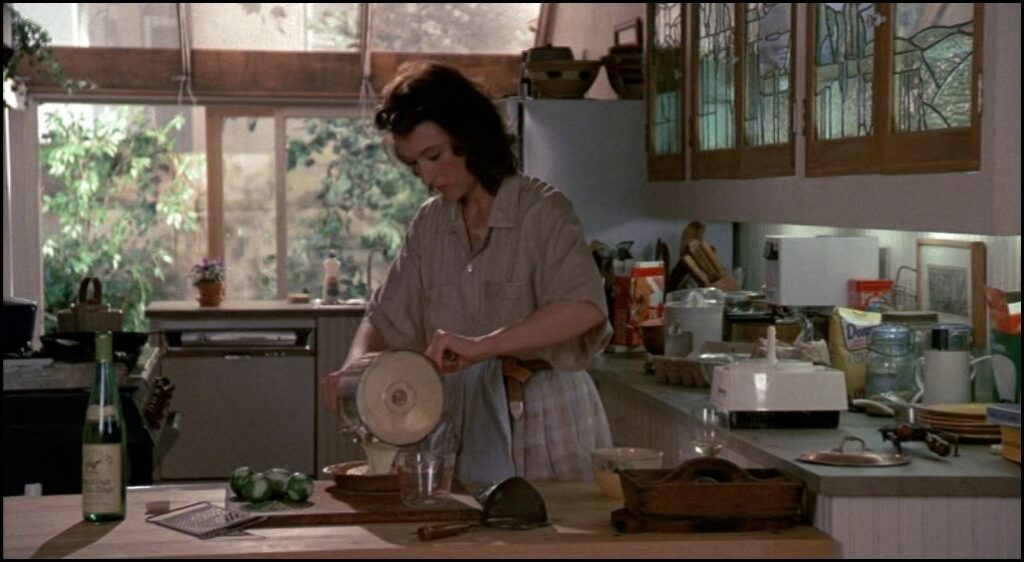
members of which would resident there until 1936, making the Reads the owners with the longest continuous period of occupation of the house at approximately 73 years. In 1936, with the Brooklyn Heights Association started and residents of Garden Street organizing to return the section of Brooklyn to its former glory, an international law professor and, eventually, a justice on the Supreme Restitution Court of Berlin, Frederic R. Sanborn purchased the property. The Sanborns would own No. 15 for approximately 40 years. The 1970s brought new ownership, a renovation, and the property’s official change to a 2-family dwelling. In the 1980s, portions of the Meryl Streep/Jack Nicholson movie,
Heartburn, were filmed in the house’s kitchen.
 No. 57 Willow Street – constructed in 1824, this landmarked brick townhouse is celebrating its bicentennial! During the course of our investigagion, we tracked down its broad array of former owners and residents who, in many ways, had a great influence on the future of our country. Most significantly was merchant Henry Bowen, a resident who had a connection with Abraham Lincoln. In the late 1850s, he invited the future present to New York City to make a speech that would end up setting Lincoln onto the road to the presidency. During this trip, Lincoln visited Brooklyn and, at one point, after having visited Plymouth Church, stood out front of No. 57 as Bowen invited him in to dinner. After the house’s construction, No. 57 (it was originally No. 47) was sold to a British dry goods merchant who had been, during the War of 1812, detained by the U.S. government as a foreign enemy.
No. 57 Willow Street – constructed in 1824, this landmarked brick townhouse is celebrating its bicentennial! During the course of our investigagion, we tracked down its broad array of former owners and residents who, in many ways, had a great influence on the future of our country. Most significantly was merchant Henry Bowen, a resident who had a connection with Abraham Lincoln. In the late 1850s, he invited the future present to New York City to make a speech that would end up setting Lincoln onto the road to the presidency. During this trip, Lincoln visited Brooklyn and, at one point, after having visited Plymouth Church, stood out front of No. 57 as Bowen invited him in to dinner. After the house’s construction, No. 57 (it was originally No. 47) was sold to a British dry goods merchant who had been, during the War of 1812, detained by the U.S. government as a foreign enemy.  After approximately four years of ownership, he sold No. 57 to future Brooklyn Mayor George Hall. The next several owners comprised merchants of various types with businesses in New York City. During the Civil War, the property ended up in the hands of partner in a drug firm, whose father founded Olcott & McKesson, a pharmaceuticals firm that, today, is a multi-billion-dollar pharmaceutical giant known to the world as McKesson.
After approximately four years of ownership, he sold No. 57 to future Brooklyn Mayor George Hall. The next several owners comprised merchants of various types with businesses in New York City. During the Civil War, the property ended up in the hands of partner in a drug firm, whose father founded Olcott & McKesson, a pharmaceuticals firm that, today, is a multi-billion-dollar pharmaceutical giant known to the world as McKesson.  The next owner was a ship’s captain and chandler who had had a colorful past as a privateer during the Civil War. His family used the property as his family’s private residence and, then, through the 1890s as an upscale boarding house, followed as a private home leased to wealthy businessmen and their families. Afterwards, in the early 20th century, the property was conveyed into the hands of line of speculative investors who would use the house for its rent roll or in order to flip the residence. At the genesis of the Depression, the next longest-owning possessors of the property, the Szolds, purchased it, living there for 30 years until 1960. During this period, the Historic American Buildings Survey (HABS) selected No. 57 as one of a number of important structures worthy of surveying and cataloging. Through this effort, intricate architectural drawings were made of the property. The subsequent owner, an international exporter, was honored with an award by President Ronald Reagan. By 1980, No. 57 once again changed hands, becoming the home to a wealthy partner with investment firm Peabody and Kidder. After 20 years of ownership, the property was conveyed to a partner with Goldman Sachs who lived there with his family into the 2000s. (To see more of this book, click HERE.)
The next owner was a ship’s captain and chandler who had had a colorful past as a privateer during the Civil War. His family used the property as his family’s private residence and, then, through the 1890s as an upscale boarding house, followed as a private home leased to wealthy businessmen and their families. Afterwards, in the early 20th century, the property was conveyed into the hands of line of speculative investors who would use the house for its rent roll or in order to flip the residence. At the genesis of the Depression, the next longest-owning possessors of the property, the Szolds, purchased it, living there for 30 years until 1960. During this period, the Historic American Buildings Survey (HABS) selected No. 57 as one of a number of important structures worthy of surveying and cataloging. Through this effort, intricate architectural drawings were made of the property. The subsequent owner, an international exporter, was honored with an award by President Ronald Reagan. By 1980, No. 57 once again changed hands, becoming the home to a wealthy partner with investment firm Peabody and Kidder. After 20 years of ownership, the property was conveyed to a partner with Goldman Sachs who lived there with his family into the 2000s. (To see more of this book, click HERE.)
 No. 2 Sidney Place – constructed in 1845, this landmarked brick townhouse would become home to countless doctors who used the property both for their residence as well as their office. First, though, the builder used the property for his family for its initial 12 years until it became a high-end rental property for medical doctors starting around 1858. One resident, who broke that tradition was Meda Blanchard, a soprano singer, the pinnacle of whose fame and success was her performance at the White House for a gathering given by the Lincolns (the first opera singer ever to do so). After her residence at No. 2 in the 1870s, the property continued its history as a residence for
No. 2 Sidney Place – constructed in 1845, this landmarked brick townhouse would become home to countless doctors who used the property both for their residence as well as their office. First, though, the builder used the property for his family for its initial 12 years until it became a high-end rental property for medical doctors starting around 1858. One resident, who broke that tradition was Meda Blanchard, a soprano singer, the pinnacle of whose fame and success was her performance at the White House for a gathering given by the Lincolns (the first opera singer ever to do so). After her residence at No. 2 in the 1870s, the property continued its history as a residence for  doctors, becoming the home to a Superintendent of the Board of Health, who managed the smallpox epidemic raging at the time. Afterwards, another doctor moved in who developed and instituted modern humane methods for caring for insane persons, which included “the abolition of all mechanical restraints.” In the early decades of the 1900s, the property once again took a detour and became the home of descendants of the original builder, then the residence of the president of the Sanborn Map Company, followed by another doctor whose wife, Juliet Mosher, was another well-known soprano. In the 1940s, a female lawyer, one of the founders of the Brooklyn Women’s Bar Association, who worked within the City’s Corporation Counsel, purchased the property, occupying the house for a number of years. Later, in the 1970s, a married couple – comprising two Swedish authors – made No. 2 their home, followed, afterwards, by a family whose matriarch was the then-current President of the Bank of New York Mellon.
doctors, becoming the home to a Superintendent of the Board of Health, who managed the smallpox epidemic raging at the time. Afterwards, another doctor moved in who developed and instituted modern humane methods for caring for insane persons, which included “the abolition of all mechanical restraints.” In the early decades of the 1900s, the property once again took a detour and became the home of descendants of the original builder, then the residence of the president of the Sanborn Map Company, followed by another doctor whose wife, Juliet Mosher, was another well-known soprano. In the 1940s, a female lawyer, one of the founders of the Brooklyn Women’s Bar Association, who worked within the City’s Corporation Counsel, purchased the property, occupying the house for a number of years. Later, in the 1970s, a married couple – comprising two Swedish authors – made No. 2 their home, followed, afterwards, by a family whose matriarch was the then-current President of the Bank of New York Mellon.
 No. 41 Monroe Place – A mid-19th century brownstone, this property constitutes the first we have researched that – a victim of eminent domain – is no longer extant. Demolished in 1936, along with several other Monroe Place brownstones, to make way for a court building, the property would have a 70+-year run. Owned by members of the Studwell family for 60 of those years, the family’s patriarch, Alexander Studwell, had made his fortune in the leather business and, incidentally, was instrumental in calling Congregationalist clergyman and magnetic speaker, Henry Ward Beecher, to the pastorate of Brooklyn Heights’ Plymouth Church. Studwell’s children would inherit No. 41 in 1891. His three sons would become, like their father, leather
No. 41 Monroe Place – A mid-19th century brownstone, this property constitutes the first we have researched that – a victim of eminent domain – is no longer extant. Demolished in 1936, along with several other Monroe Place brownstones, to make way for a court building, the property would have a 70+-year run. Owned by members of the Studwell family for 60 of those years, the family’s patriarch, Alexander Studwell, had made his fortune in the leather business and, incidentally, was instrumental in calling Congregationalist clergyman and magnetic speaker, Henry Ward Beecher, to the pastorate of Brooklyn Heights’ Plymouth Church. Studwell’s children would inherit No. 41 in 1891. His three sons would become, like their father, leather  merchants. When the family finally parted with the property in 1924, it was conveyed to a friend of the family, who quickly resold it to a realtor. After a few more quick – and, likely, profitable – sales, the property landed in the possession of a member of the Syrian diaspora who was a dealer in ship’s supplies. After briefly attempting to sell the property, he converted it into a rooming house, leasing it out to operators wishing to run such a business. By 1930, the property had 13 residents – mostly lodgers. The property fell into foreclosure the following year, however, and was sold, eventually ending up in the hands of the family that had, for a few years, been leasing it to manage as a rooming house. After possessing the property for a short four years, the City of New York announced its intention to acquire No. 41 – along with several other adjoining brownstones – through eminent domain. The land, the City claimed, was needed for its new Appellate Court house. Demolition on the brownstone began in late 1936. And the court house, which went up over a period of approximately two years, opened in the fall of 1938.
merchants. When the family finally parted with the property in 1924, it was conveyed to a friend of the family, who quickly resold it to a realtor. After a few more quick – and, likely, profitable – sales, the property landed in the possession of a member of the Syrian diaspora who was a dealer in ship’s supplies. After briefly attempting to sell the property, he converted it into a rooming house, leasing it out to operators wishing to run such a business. By 1930, the property had 13 residents – mostly lodgers. The property fell into foreclosure the following year, however, and was sold, eventually ending up in the hands of the family that had, for a few years, been leasing it to manage as a rooming house. After possessing the property for a short four years, the City of New York announced its intention to acquire No. 41 – along with several other adjoining brownstones – through eminent domain. The land, the City claimed, was needed for its new Appellate Court house. Demolition on the brownstone began in late 1936. And the court house, which went up over a period of approximately two years, opened in the fall of 1938.
 No. 15 Garden Place – This Greek Revival row house was constructed in 1846 by street contractor James Collins, whose biggest claim to fame came when he constructed the first ever subway under Atlantic Avenue. Collins would lease out the property (its original address was No. 8) to an agent to manage as an upscale boarding house. The first boarders appear to have been a merchant and a bookkeeper, both of which possibly lived there with their families. In 1856, however, after having apparently overextended himself and fallen behind on a large mortgage note, Collins would be forced to lose control of the property when management of his estate was placed into the hands of assignees. These assignees, in an effort to help Collins pay off his debts, would eventually sell, in addition to many of his other holdings, No. 8 in 1864.
No. 15 Garden Place – This Greek Revival row house was constructed in 1846 by street contractor James Collins, whose biggest claim to fame came when he constructed the first ever subway under Atlantic Avenue. Collins would lease out the property (its original address was No. 8) to an agent to manage as an upscale boarding house. The first boarders appear to have been a merchant and a bookkeeper, both of which possibly lived there with their families. In 1856, however, after having apparently overextended himself and fallen behind on a large mortgage note, Collins would be forced to lose control of the property when management of his estate was placed into the hands of assignees. These assignees, in an effort to help Collins pay off his debts, would eventually sell, in addition to many of his other holdings, No. 8 in 1864.  The next owner was a ship’s captain, James Funcke, who continued to lease the property during his life, no longer as a boarding house, but rather as a private dwelling. It was during this period that it would become occupied by a straw hat merchant—and future owner of the property—George Washington Read. Upon Funcke’s death in 1869, the property was left in his will to his cousin, Elizabeth A. Granade, who continued to rent the property to its long-term tenant, Read, until 1881, when Read—after having lived in the property for approximately 17 years—purchased it from her. Read, however, then closing in on 70 years old, would pass a few years later, leaving the house to his family,
The next owner was a ship’s captain, James Funcke, who continued to lease the property during his life, no longer as a boarding house, but rather as a private dwelling. It was during this period that it would become occupied by a straw hat merchant—and future owner of the property—George Washington Read. Upon Funcke’s death in 1869, the property was left in his will to his cousin, Elizabeth A. Granade, who continued to rent the property to its long-term tenant, Read, until 1881, when Read—after having lived in the property for approximately 17 years—purchased it from her. Read, however, then closing in on 70 years old, would pass a few years later, leaving the house to his family,  members of which would resident there until 1936, making the Reads the owners with the longest continuous period of occupation of the house at approximately 73 years. In 1936, with the Brooklyn Heights Association started and residents of Garden Street organizing to return the section of Brooklyn to its former glory, an international law professor and, eventually, a justice on the Supreme Restitution Court of Berlin, Frederic R. Sanborn purchased the property. The Sanborns would own No. 15 for approximately 40 years. The 1970s brought new ownership, a renovation, and the property’s official change to a 2-family dwelling. In the 1980s, portions of the Meryl Streep/Jack Nicholson movie, Heartburn, were filmed in the house’s kitchen.
members of which would resident there until 1936, making the Reads the owners with the longest continuous period of occupation of the house at approximately 73 years. In 1936, with the Brooklyn Heights Association started and residents of Garden Street organizing to return the section of Brooklyn to its former glory, an international law professor and, eventually, a justice on the Supreme Restitution Court of Berlin, Frederic R. Sanborn purchased the property. The Sanborns would own No. 15 for approximately 40 years. The 1970s brought new ownership, a renovation, and the property’s official change to a 2-family dwelling. In the 1980s, portions of the Meryl Streep/Jack Nicholson movie, Heartburn, were filmed in the house’s kitchen.